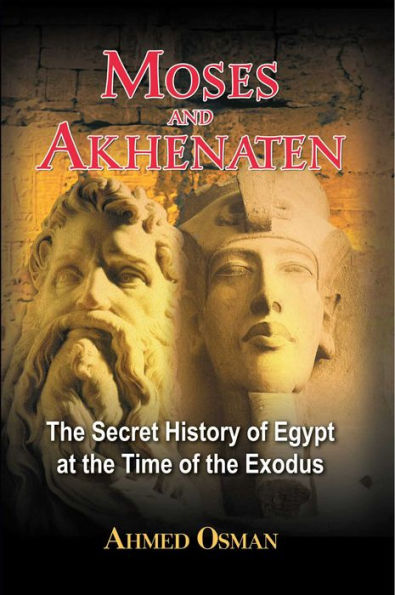Read an Excerpt
Chapter 2
WAS MOSES A KING?
Apart from a rather muddled chronology at the start of the Book of Exodus, the story of Moses it tells is quite straightforward. However, the picture changes when we examine other holy books and the work of Manetho, the third century BC native Egyptian historian, which was subsequently transmitted by the Jewish historian, Flavius Josephus.
While we know from the Old Testament that Moses was brought up in the royal palace, it does not suggest that he ever succeeded to the throne. Yet the story of Moses in the Talmud-the compilation of Hebrew laws and legends, dating from the early centuries AD and regarded as second only to the Old Testament as an authoritative source of the early history of the Jews-contains some details not to be found in the Bible and often parallels Manetho's account of the Exodus, derived from Egyptian folklore. One of the details is that Moses was a king.
According to the Talmud, which agrees that Moses was brought up in Pharaoh's palace, he grew into a handsome lad, dressed royally, was honoured by the people and seemed in all things of royal lineage. However, at about the age of eighteen he was forced to flee from Egypt after, on a visit to Goshen, he came across an Egyptian smiting one of his Israelite brethren and slew him.
The Talmud goes on to relate that, at about this time, there was a rebellion against the King of Ethiopia. The king appointed a magician's son named Bi'lam-one of Pharaoh's advisers, who was considered exceptionally wise but had fled to Ethiopia from his own country, Egypt-to be his representative in his absence and marched at the head of a large army, which vanquished the rebels. Bi'lam betrayed his trust, however, and, usurping the power he was supposed to protect, induced the Ethiopians to appoint him in place of their absent king. He strengthened the walls of the capital, built huge fortresses and dug ditches and pits between the city and the nearby river. On his return the Ethiopian king was astonished to see all these fortifications, which he thought were defences against a possible attack by an enemy. When he found that the gates of the city were actually closed against him, he embarked on a war against the usurper, Bi'lam, that lasted nine years.
One of the soldiers who fought on the side of the king, according to the Talmud story, was Moses, who, after fleeing from Egypt, had made his way not to Midian in Sinai, as the Old Testament says, but to Ethiopia. He became a great favourite with the Ethiopian ruler and his companions with the result that, when the king died, this inner circle appointed Moses as their new king and leader. Moses, who, according to the Talmud, was made king ‘in the hundred and fifty-seventh year after Israel went down into Egypt', inspired the army with his courage and the city eventually fell to him. The account goes on: ‘... Bi'lam escaped and fled back to Egypt, becoming one of the magicians mentioned in the Scriptures. And the Ethiopians placed Moses upon their throne and set the crown of State upon his head, and they gave him the widow of their king for a wife.'
Moses reigned ‘in justice and righteousness. But the Queen of Ethiopia, Adonith [Aten-it in Egyptian], who wished her own son by the dead king to rule, said to the people: "Why should this stranger continue to rule over you?" The people, however, would not vex Moses, whom they loved, by such a proposition; but Moses resigned voluntarily the power which they had given him and departed from their land. And the people of Ethiopia made him many rich presents, and dismissed him with great honours.'1
So, according to this tradition, which has survived in the Talmud, Moses was elevated to the post of king for some time before eventually seeking the sanctuary of Sinai. Furthermore, where Akhenaten, as we shall see, looked upon himself as the high priest of his God, the Talmud tells us that ‘Moses officiated as the high priest. He was also considered the King of Israel during the sojourn in the desert.' Where did the rabbis obtain the facts in the Talmud? They can hardly have invented them and, indeed, had no reason to do so. Like the accounts of the historian Manetho, the Talmudic stories contain many distortions and accretions arising from the fact that they were transmitted orally for a long time before finally being set down in writing. Yet one can sense that behind the myths there must have lain genuine historical events that had been suppressed from the official accounts of both Egypt and Israel, but had survived in the memories of the generations.



